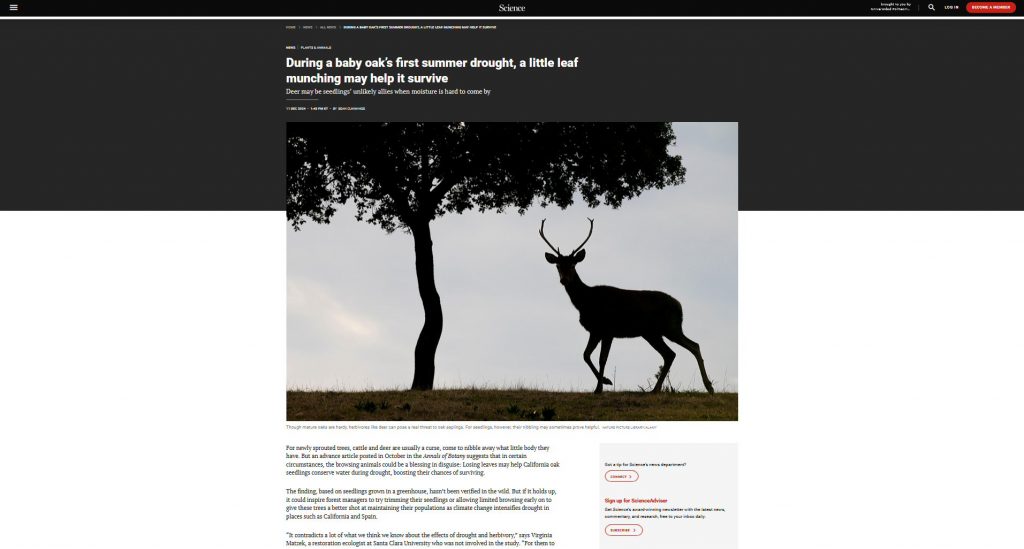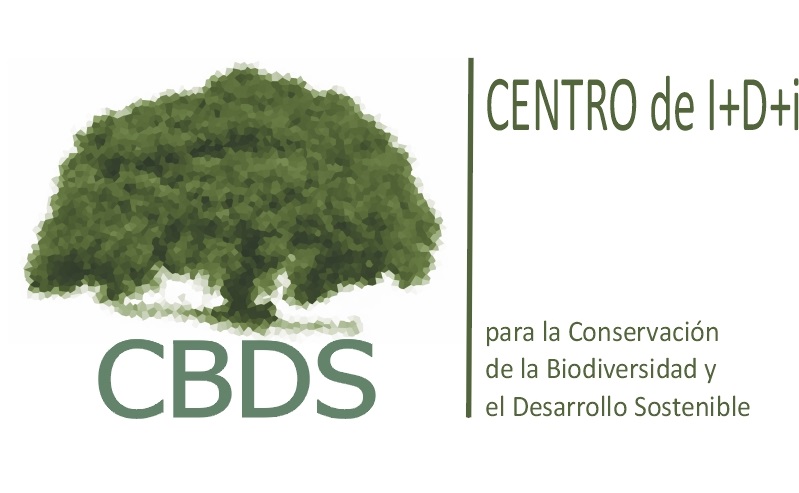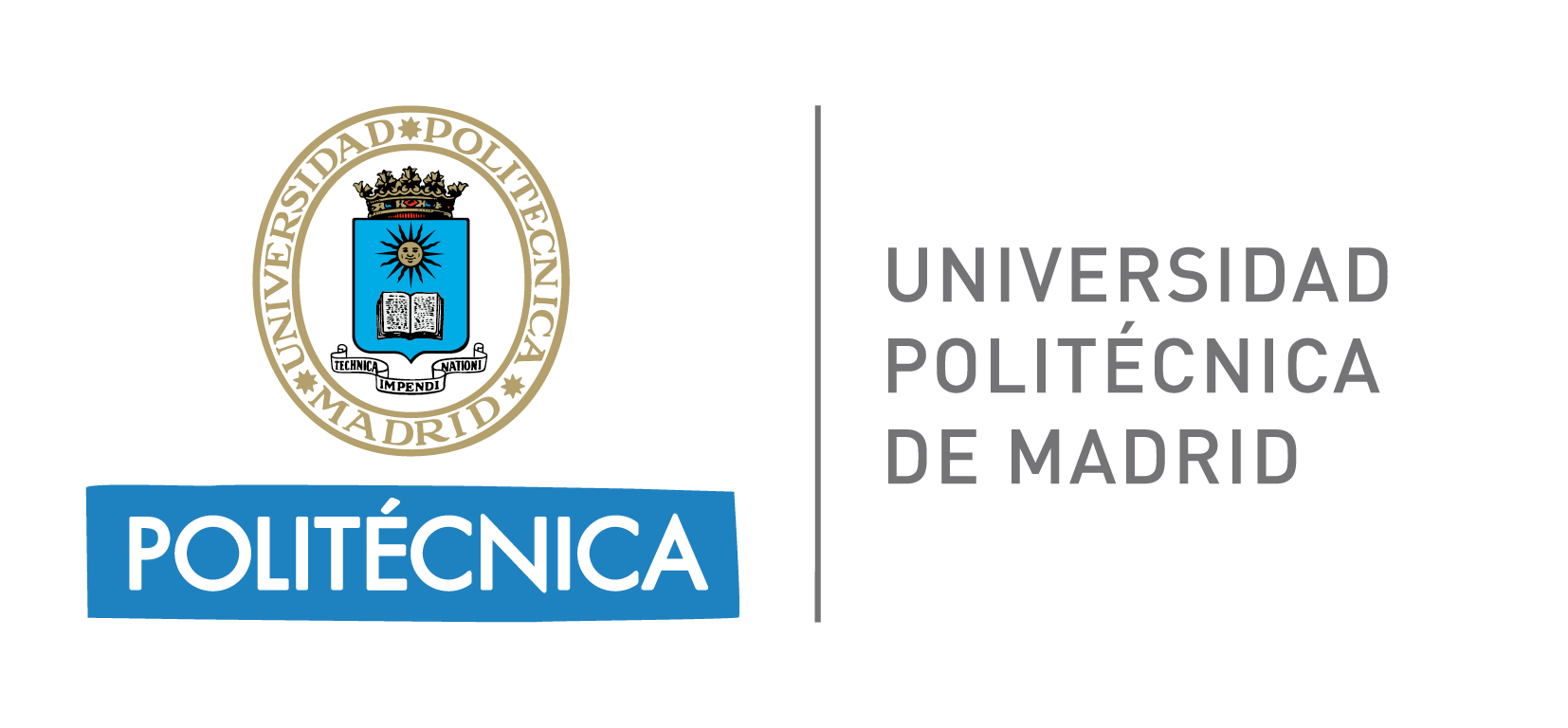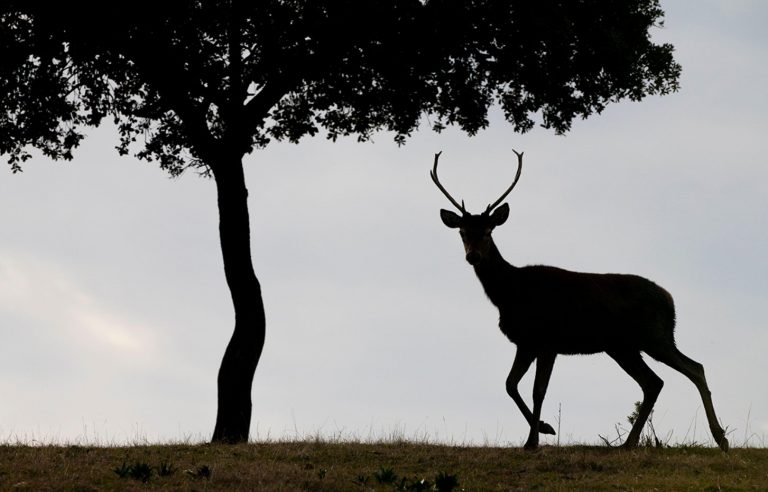Autores: Marta Peláez, Aida López-Sánchez, Geraldo Wilson Fernandes, Rodolfo Dirzo,
Jesús Rodríguez-Calcerrada, Ramón Perea
Publicación: Annals of Botany, 2024;, mcae178
Enlace DOI: https://doi.org/10.1093/aob/mcae178
Resumen: Anthropogenic disturbances are increasing both herbivory and drought stress, threatening plant reproduction in oak-dominated ecosystems. This study examined the individual and combined effects of herbivory and drought on seedlings of two Mediterranean oak species with contrasting drought resistance. Results showed that herbivory improved seedling survival under severe drought by reducing transpiration through decreased leaf area and compensatory root growth, with species-specific responses observed. Herbivory benefited the less drought-resistant species at moderate water stress levels and influenced leaf traits, although its effect on chlorophyll was minimal. These findings emphasize the importance of species-specific traits and developmental stages in understanding the complex interactions between herbivory and drought, with implications for the persistence and restoration of multi-species oak savann.
Este estudio ha sido mencionado en la revista Science.



